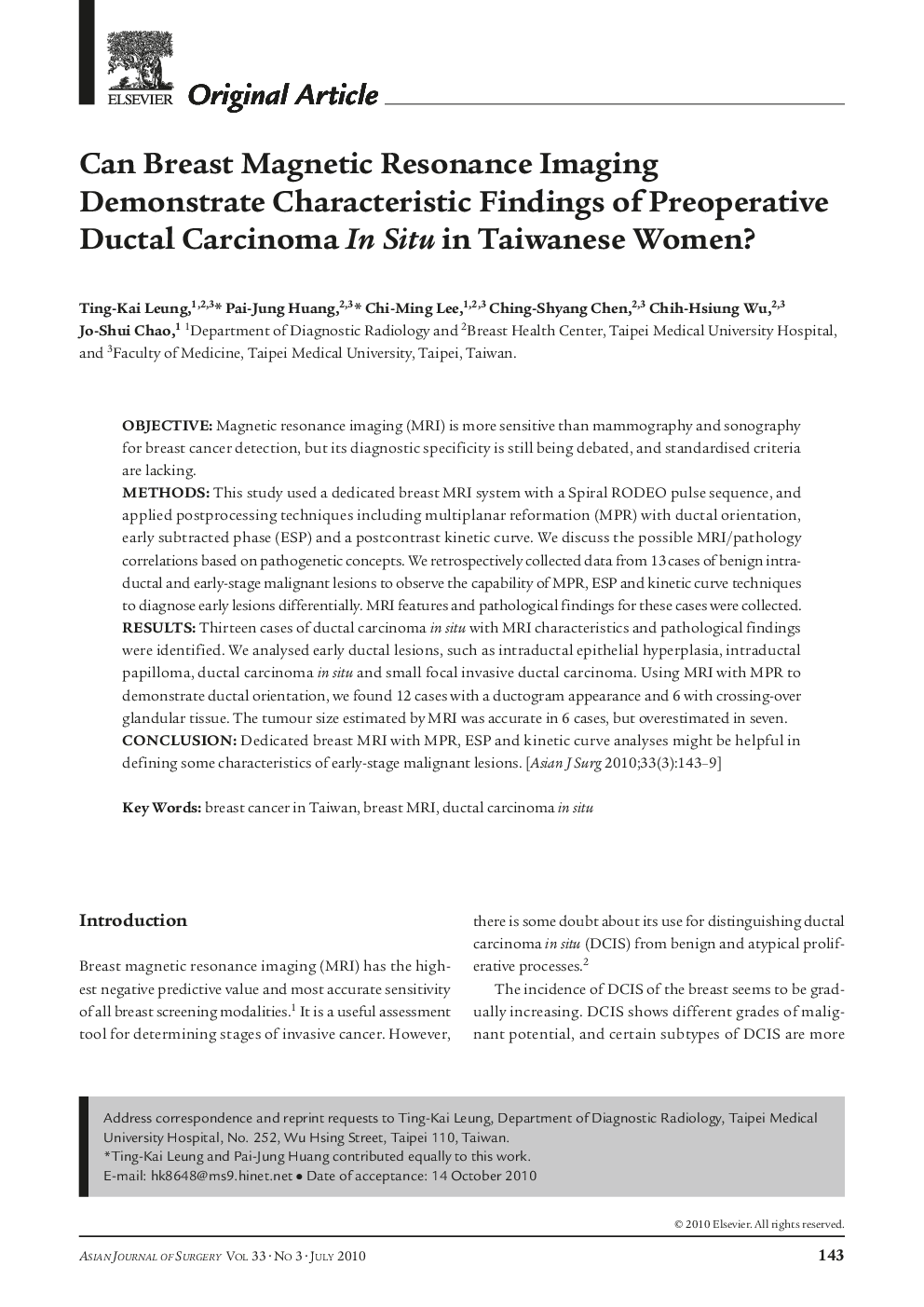| Article ID | Journal | Published Year | Pages | File Type |
|---|---|---|---|---|
| 4282866 | Asian Journal of Surgery | 2010 | 7 Pages |
ObjectiveMagnetic resonance imaging (MRI) is more sensitive than mammography and sonography for breast cancer detection, but its diagnostic specificity is still being debated, and standardised criteria are lacking.MethodsThis study used a dedicated breast MRI system with a Spiral RODEO pulse sequence, and applied postprocessing techniques including multiplanar reformation (MPR) with ductal orientation, early subtracted phase (ESP) and a postcontrast kinetic curve. We discuss the possible MRI/pathology correlations based on pathogenetic concepts. We retrospectively collected data from 13 cases of benign intraductal and early-stage malignant lesions to observe the capability of MPR, ESP and kinetic curve techniques to diagnose early lesions differentially. MRI features and pathological findings for these cases were collected.ResultsThirteen cases of ductal carcinoma in situ with MRI characteristics and pathological findings were identified. We analysed early ductal lesions, such as intraductal epithelial hyperplasia, intraductal papilloma, ductal carcinoma in situ and small focal invasive ductal carcinoma. Using MRI with MPR to demonstrate ductal orientation, we found 12 cases with a ductogram appearance and 6 with crossing-over glandular tissue. The tumour size estimated by MRI was accurate in 6 cases, but overestimated in seven.ConclusionDedicated breast MRI with MPR, ESP and kinetic curve analyses might be helpful in defining some characteristics of early-stage malignant lesions.
